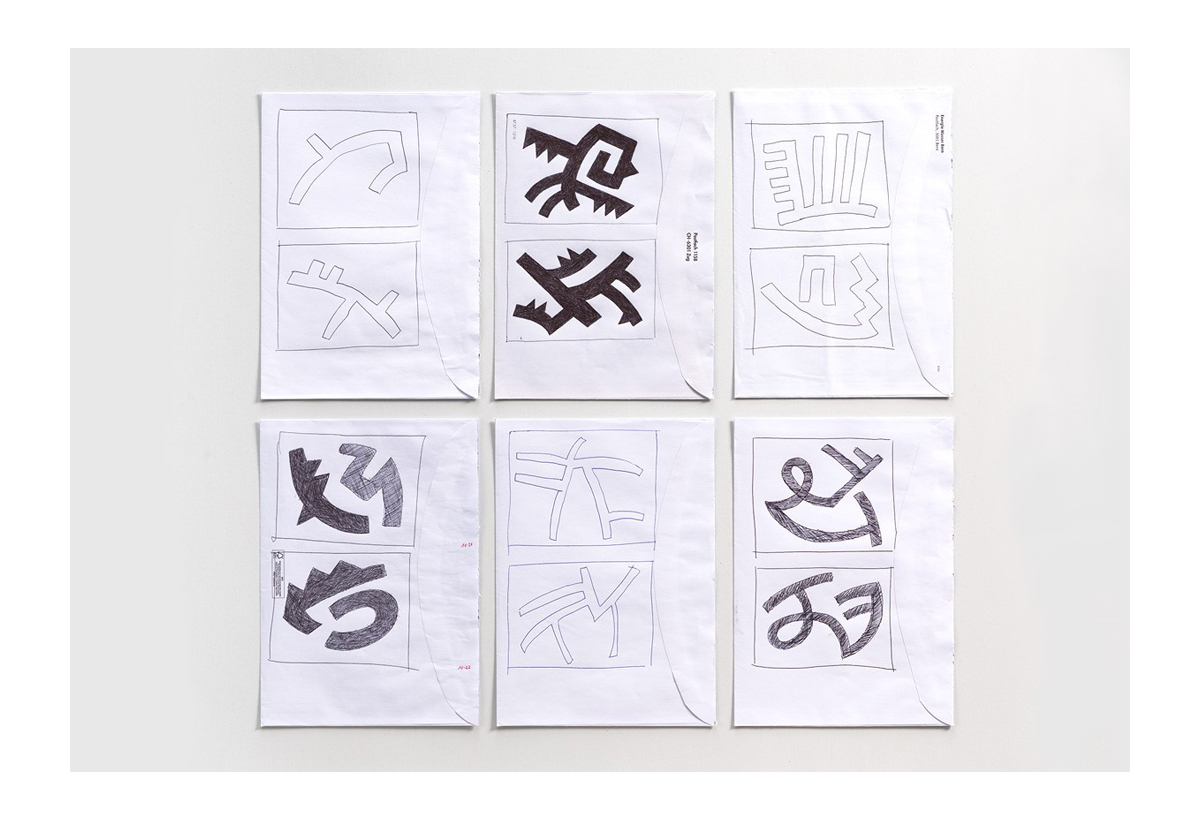Processes, materials, formats
The sketches
The small-format sketches, mostly on the reverse side of C5 standard envelopes, come about spontaneously and quickly, with, as far as possible, a reduced conscious influence on the choice of line. Briskly drawn in one line, without any intention of precision. Sometimes left as contours, and sometimes filled in as forms. Initially, the sketches did not have any typological similarities. Later always in a series with their own similar typological characteristics., kept quite open and always with exceptions, but always recognizable as a family.
The rectangular 9 x 7 cm sketches serve as bases for the 12 x 9.5 cm drafts in the books.
The books
The envelope sketches are executed in the sign books with 64 pages, always in acrylics, sometimes completed with bamboo pen and ink. The small 12 x 9.5 pictures are, even though still drafts, elaborately painted, with paints applied in several layers. This enables an intense engagement with the color, resulting in intense shades of color that could not be achieved in a single opaque layer.
The 25 x 20 cm canvases
The envelope sketches, further developed in the books, are the basis for the works on the 25 x 20 cm canvases. Here, the forms are sometimes revised, and the colors changed. The paintings emerge as series with blurry typological characteristics. The idea behind this is to assemble the signs into groups of 16 pictures, but also in smaller combinations. Even though the order of the individual canvases has been fixed, it can be changed, and thus also the overall appearance of the group. Just as, for example, characters can be combined into different words, and further into different sentences and content, the signs without any fixed meaning can be arranged in different combinations.
By changing placements within a group of 16 25 x 20 canvases (without turning the individual canvases on their own axis, which is also conceivable, since signs without meaning don’t have a top or bottom, no left or right), twenty trillion nine hundred twenty-two billion seven hundred eighty-nine million eight hundred eighty thousand combinations are possible. (Combinatorics, permutation N = 16)
The acrylic paintings on paper and canvas
This works no longer depict individual signs, but combinations, accumulations, , mutations, overlaps, links, and entanglements of them. Usually, they are produced as small series of between two to five paintings. And some serve as the basis for the larger canvases.
The Larger canvases
Larger canvases, 40 x 40 cm to 100 x 100 cm, are often further development of works on paper.

